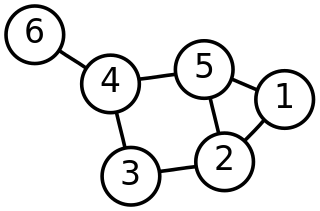
In mathematics, graph theory is the study of graphs, which are mathematical structures used to model pairwise relations between objects. A graph in this context is made up of vertices which are connected by edges. A distinction is made between undirected graphs, where edges link two vertices symmetrically, and directed graphs, where edges link two vertices asymmetrically. Graphs are one of the principal objects of study in discrete mathematics.
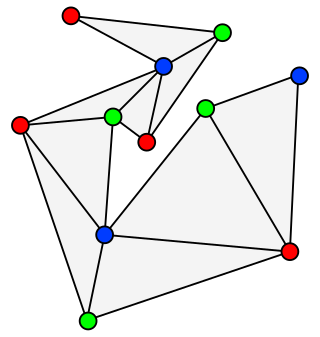
In graph theory, an outerplanar graph is a graph that has a planar drawing for which all vertices belong to the outer face of the drawing.
In the psychology of motivation, balance theory is a theory of attitude change, proposed by Fritz Heider. It conceptualizes the cognitive consistency motive as a drive toward psychological balance. The consistency motive is the urge to maintain one's values and beliefs over time. Heider proposed that "sentiment" or liking relationships are balanced if the affect valence in a system multiplies out to a positive result.

Frank Harary was an American mathematician, who specialized in graph theory. He was widely recognized as one of the "fathers" of modern graph theory. Harary was a master of clear exposition and, together with his many doctoral students, he standardized the terminology of graphs. He broadened the reach of this field to include physics, psychology, sociology, and even anthropology. Gifted with a keen sense of humor, Harary challenged and entertained audiences at all levels of mathematical sophistication. A particular trick he employed was to turn theorems into games—for instance, students would try to add red edges to a graph on six vertices in order to create a red triangle, while another group of students tried to add edges to create a blue triangle. Because of the theorem on friends and strangers, one team or the other would have to win.
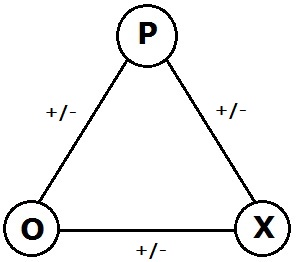
In the area of graph theory in mathematics, a signed graph is a graph in which each edge has a positive or negative sign.

Herbert Saul Wilf was an American mathematician, specializing in combinatorics and graph theory. He was the Thomas A. Scott Professor of Mathematics in Combinatorial Analysis and Computing at the University of Pennsylvania. He wrote numerous books and research papers. Together with Neil Calkin he founded The Electronic Journal of Combinatorics in 1994 and was its editor-in-chief until 2001.

In combinatorics, an area of mathematics, graph enumeration describes a class of combinatorial enumeration problems in which one must count undirected or directed graphs of certain types, typically as a function of the number of vertices of the graph. These problems may be solved either exactly or asymptotically. The pioneers in this area of mathematics were George Pólya, Arthur Cayley and J. Howard Redfield.
The Journal of Combinatorial Theory, Series A and Series B, are mathematical journals specializing in combinatorics and related areas. They are published by Elsevier. Series A is concerned primarily with structures, designs, and applications of combinatorics. Series B is concerned primarily with graph and matroid theory. The two series are two of the leading journals in the field and are widely known as JCTA and JCTB.
The reconstruction conjecture of Stanisław Ulam is one of the best-known open problems in graph theory. Using the terminology of Frank Harary it can be stated as follows: If G and H are two graphs on at least three vertices and ƒ is a bijection from V(G) to V(H) such that G\{v} and H\{ƒ(v)} are isomorphic for all vertices v in V(G), then G and H are isomorphic.
In mathematics and social science, a collaboration graph is a graph modeling some social network where the vertices represent participants of that network and where two distinct participants are joined by an edge whenever there is a collaborative relationship between them of a particular kind. Collaboration graphs are used to measure the closeness of collaborative relationships between the participants of the network.
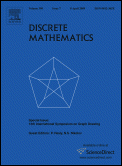
Discrete Mathematics is a biweekly peer-reviewed scientific journal in the broad area of discrete mathematics, combinatorics, graph theory, and their applications. It was established in 1971 and is published by North-Holland Publishing Company. It publishes both short notes, full length contributions, as well as survey articles. In addition, the journal publishes a number of special issues each year dedicated to a particular topic. Although originally it published articles in French and German, it now allows only English language articles. The editor-in-chief is Douglas West.
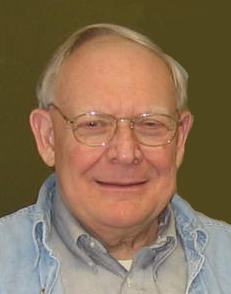
Gary Theodore Chartrand is an American-born mathematician who specializes in graph theory. He is known for his textbooks on introductory graph theory and for the concept of a highly irregular graph.
Lowell Wayne Beineke is a professor of graph theory at Purdue University Fort Wayne. Beineke is known for his elegant characterization of line graphs in terms of the nine Forbidden graph characterization.

In the mathematical field of graph theory, the Goldner–Harary graph is a simple undirected graph with 11 vertices and 27 edges. It is named after A. Goldner and Frank Harary, who proved in 1975 that it was the smallest non-Hamiltonian maximal planar graph. The same graph had already been given as an example of a non-Hamiltonian simplicial polyhedron by Branko Grünbaum in 1967.
In the mathematical field of graph theory, an integral graph is a graph whose adjacency matrix's spectrum consists entirely of integers. In other words, a graph is an integral graph if all of the roots of the characteristic polynomial of its adjacency matrix are integers.

In graph theory, a caterpillar or caterpillar tree is a tree in which all the vertices are within distance 1 of a central path.
Michael David Plummer is a retired mathematics professor from Vanderbilt University. His field of work is in graph theory in which he has produced over a hundred papers and publications. He has also spoken at over a hundred and fifty guest lectures around the world.
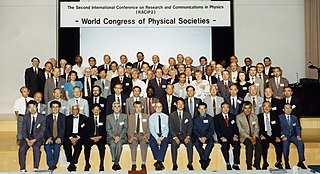
Kōji Husimi was a Japanese theoretical physicist who served as the president of the Science Council of Japan. Husimi trees in graph theory, the Husimi Q representation in quantum mechanics, and Husimi's theorem in the mathematics of paper folding are named after him.

Discrete Applied Mathematics is a peer-reviewed scientific journal covering algorithmic and applied areas of discrete mathematics. It is published by Elsevier and the editor-in-chief is Endre Boros. The journal was split off from another Elsevier journal, Discrete Mathematics, in 1979, with that journal's founder Peter Ladislaw Hammer as its founding editor-in-chief.
Judith Querida Longyear was an American mathematician and professor whose research interests included graph theory and combinatorics. Longyear was the second woman to ever earn a mathematics Ph.D. from Pennsylvania State University, where she studied under the supervision of Sarvadaman Chowla and wrote a thesis entitled Tactical Configurations. Longyear taught mathematics at several universities including California Institute of Technology, Dartmouth College and Wayne State University. She worked on nested block designs and Hadamard matrices.











